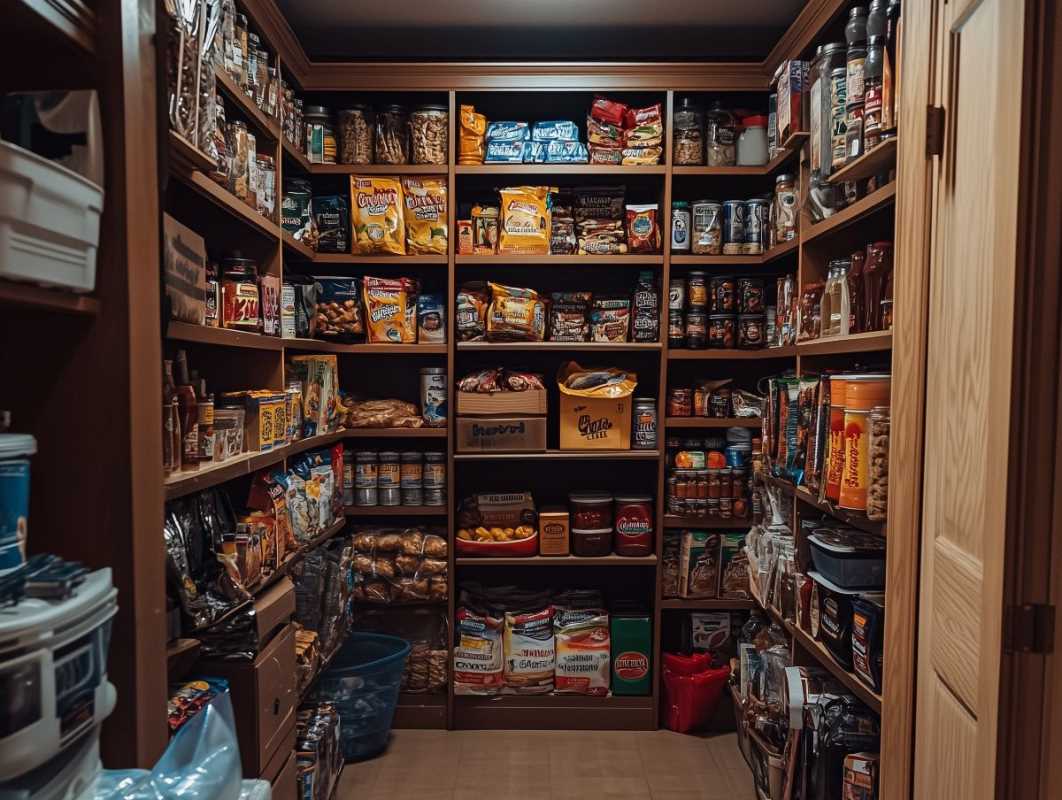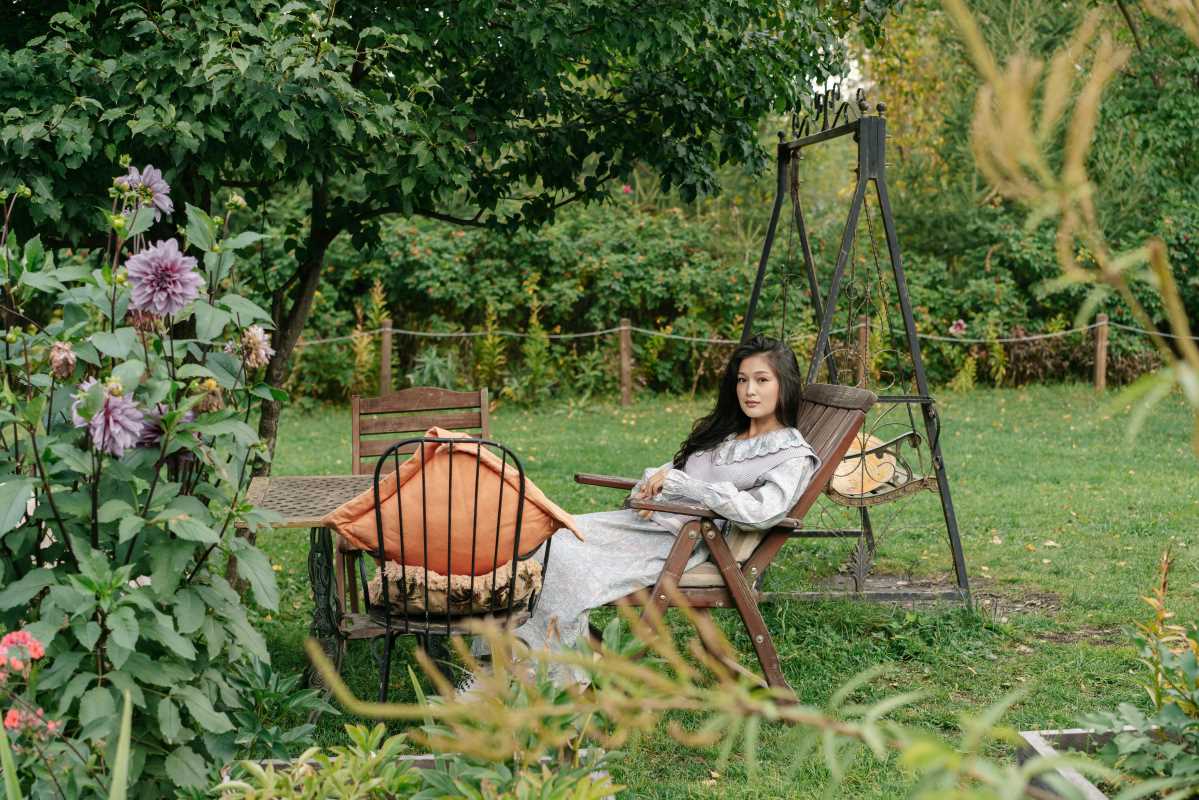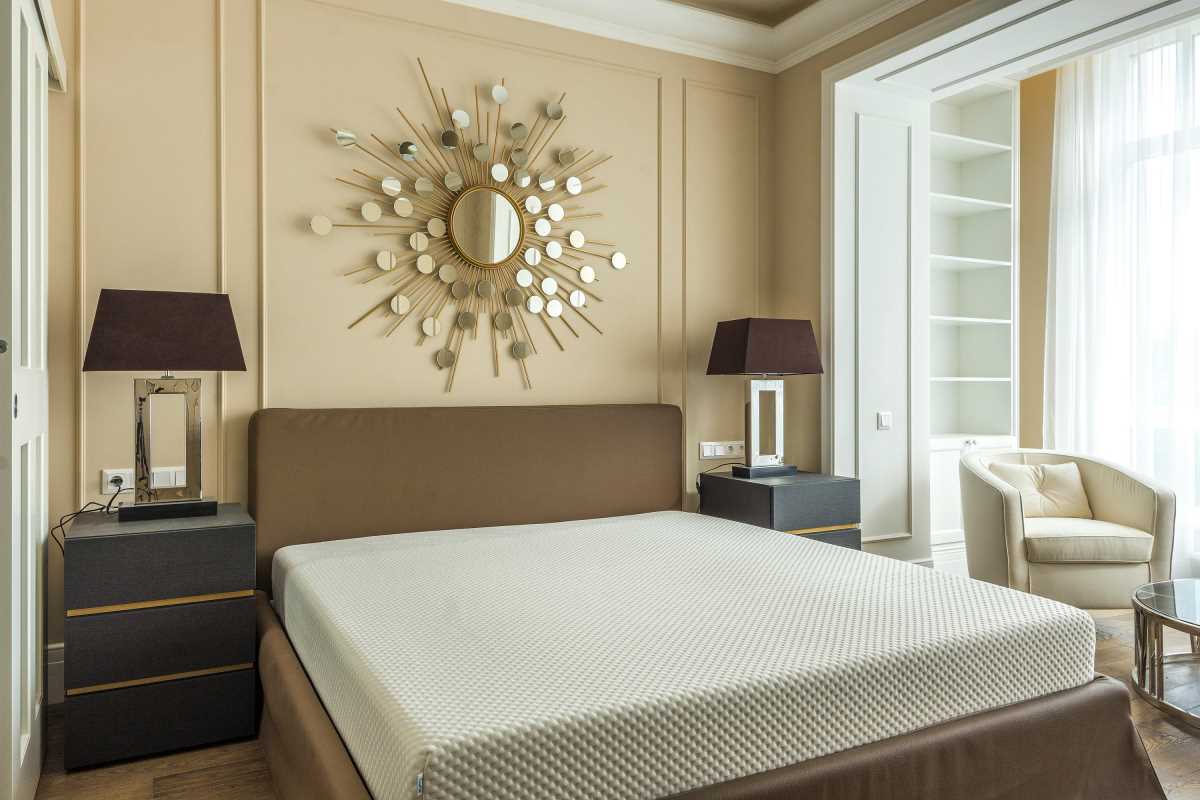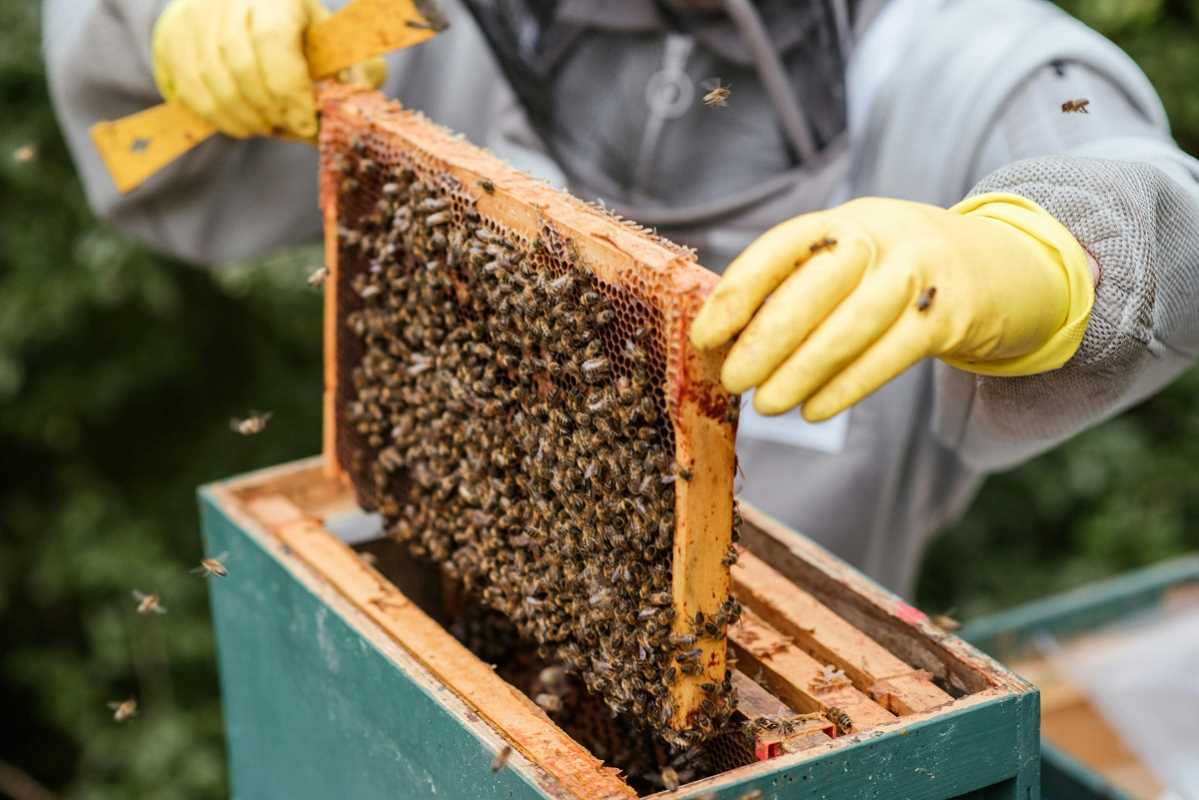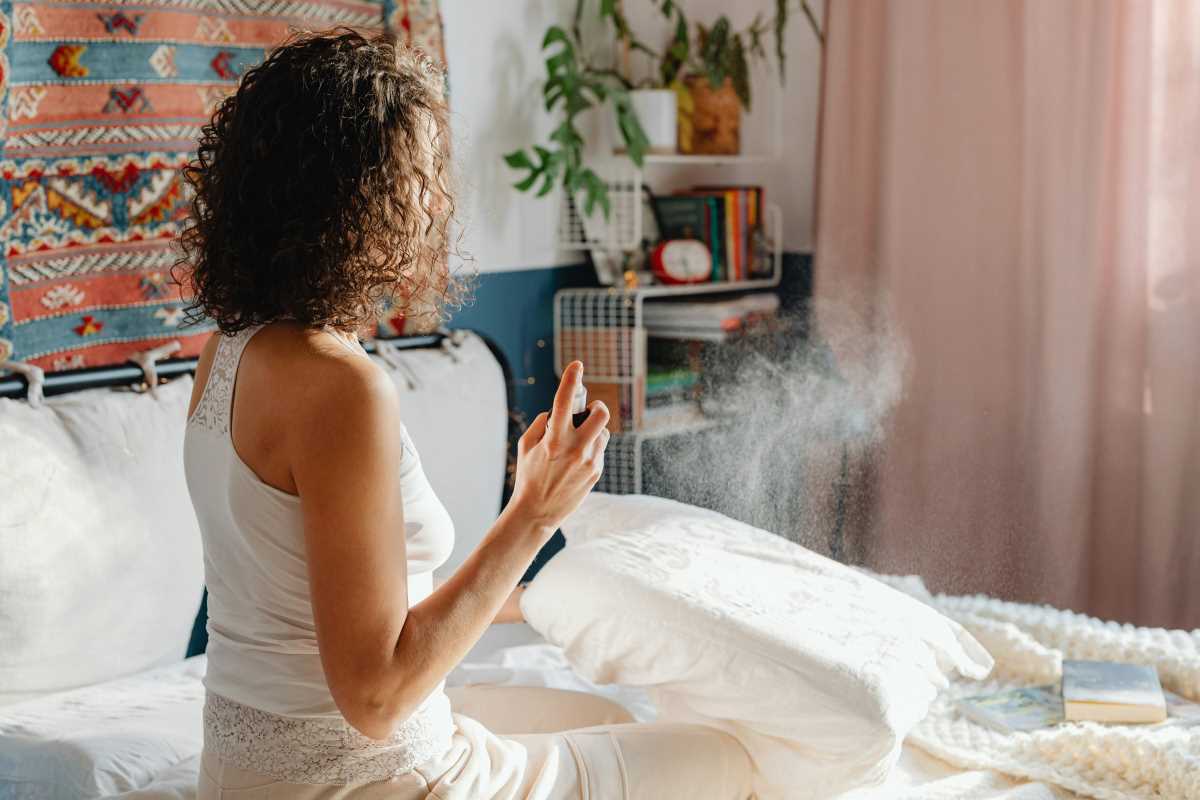Our gardens, patios, and balconies aren’t just places for us to soak up sunshine or enjoy a quiet cup of coffee. They’re also crucial habitats for pollinators like bees, butterflies, and hummingbirds. These creatures work tirelessly to pollinate over 75% of global crops, keeping our ecosystems and food supplies thriving. But with habitat loss and pesticide use on the rise, pollinators are struggling, and even small outdoor spaces can play a big role in their recovery.
Designing a patio or balcony that welcomes pollinators is a rewarding way to help the environment while adding life, color, and beauty to your space. Whether you’re working with a spacious patio or a compact balcony, creating a pollinator-friendly space can be both simple and stylish. Here’s how you can design an outdoor area that supports these vital creatures.
Why Create a Pollinator-Friendly Space?
Before we talk about how, it’s worth understanding why encouraging pollinators is important. Bees, butterflies, moths, beetles, and other pollinators are the backbone of many ecosystems.
- Food security: Pollinators are essential for the growth of fruits, vegetables, nuts, and seeds. Without them, our food production would decline dramatically.
- Biodiversity: Encouraging pollinators helps local plants thrive, which supports a wider variety of wildlife.
- Environmental health: Pollinator-friendly flowers, shrubs, and water sources contribute to cleaner air, healthier soil, and sustainable landscapes.
Even a small patio or balcony can become a safe haven for these hardworking species. Best of all, pollinator-friendly spaces are vibrant, lively, and brimming with nature’s beauty.
1. Choose the Right Plants
The foundation of any pollinator-friendly space is plants. The key is to provide a diverse selection of flowers that offer nectar and pollen throughout the growing season.
Go Native
Native plants are best for attracting local pollinators because they’ve evolved alongside each other. Check the native plant lists for your region and select species that thrive with minimal care. Some great native choices include milkweed for monarch butterflies, purple coneflower (Echinacea) for bees, and goldenrod for various insects.
Pick Pollinator Favorites
Different pollinators are drawn to specific types of flowers. For example:
- Bees love lavender, sunflowers, and rosemary.
- Butterflies are drawn to flat-topped flowers like zinnias and pentas.
- Hummingbirds flock to tubular blooms in red, orange, and pink, like honeysuckle or salvia.
Plant species that bloom at different times of the year to provide a consistent food source for pollinators throughout spring, summer, and fall.
Use Containers Wisely
On a balcony or patio, where space is limited, container gardening is your best friend. Use a mix of pots, hanging baskets, and railing planters to maximize plant diversity and add layers to your design.
2. Incorporate a Water Source
Pollinators need access to clean water, but they often struggle to find it. You can create a simple water source that not only supports pollinators but also adds an attractive feature to your outdoor space.
Bee-Friendly Watering
Bees in particular need shallow water to stay safe while they drink. Fill a shallow dish or saucer with water and add small stones or marbles for them to perch on. Change the water regularly to prevent mosquitoes from breeding.
Butterfly Puddles
Butterflies are drawn to slightly muddy or sandy areas where they can absorb minerals as they drink. Add a small dish of damp sand or mud to your patio and watch as butterflies come to visit.
Birdbaths and Fountains
If you have space, a small birdbath or fountain can attract hummingbirds. Make sure the water is clean and fresh, and consider providing perches nearby.
3. Skip the Pesticides
While it might be tempting to treat your plants with pesticides to ward off pests, many common pesticides are deadly to pollinators. Even organic or natural pesticides can harm bees, butterflies, and other beneficial insects.
How to Avoid Pesticides
- Use companion planting to naturally repel pests. For example, plant marigolds alongside vegetables to deter aphids.
- Adopt natural predators like ladybugs and praying mantises, which feed on pests without harming pollinators.
- Encourage healthy soil by using compost and organic fertilizers, which can strengthen plants and make them more resilient to disease.
4. Design for All Sizes
Patios and balconies don’t always offer sprawling space, but even the smallest area can become a haven for pollinators with the right design ideas.
Vertical Gardening
Use vertical planters, shelving, or wall-mounted pots to grow flowers and herbs without taking up too much floor space. Climbing plants like clematis and morning glory can cover walls or lattice panels, adding both greenery and blooms for pollinators.
Use Layers
Create layers of color and texture by arranging pots at different heights. Taller flowering plants can sit in the back while smaller pots take center stage. This not only looks visually appealing but also gives a variety of pollinators access to food.
Compact Furniture
If you want room for yourself as well as pollinators, use space-efficient furniture like foldable chairs or corner seating. Create a cozy seating area while leaving plenty of room for plants and water features.
5. Add Pollinator-Friendly Features
Beyond plants and water, there are small details you can add to make your space even more inviting for pollinators.
Provide Shelter
Pollinators need safe spaces to rest, lay eggs, and seek refuge from predators. Consider:
- Bee hotels for solitary bees. These wooden structures are packed with small holes where bees can nest.
- Butterfly houses, which mimic natural crevices for butterflies to shelter in.
- Dense foliage from shrubs or grasses, providing natural hideaways for resting insects.
Keep It Chemical-Free
Pollinators are highly sensitive to synthetic and harsh chemicals, so choose eco-friendly paints, stains, and cleaners for your patio furniture or balcony flooring.
6. Create Visual Appeal
Blending style with function is one of the joys of designing a pollinator-friendly space. When done thoughtfully, your balcony or patio becomes both a sanctuary for pollinators and a lovely retreat for you.
Match Your Décor
Choose pots, planters, and accessories that reflect your personal taste. Whether your style is rustic, modern, or a mix of both, there are plenty of beautiful ways to display pollinator-friendly flowers and greenery.
Color Palette
Bright and bold colors attract pollinators. Don’t shy away from vibrant reds, yellows, and purples in your plant selections. Accentuate those tones in your outdoor décor for a cohesive look.
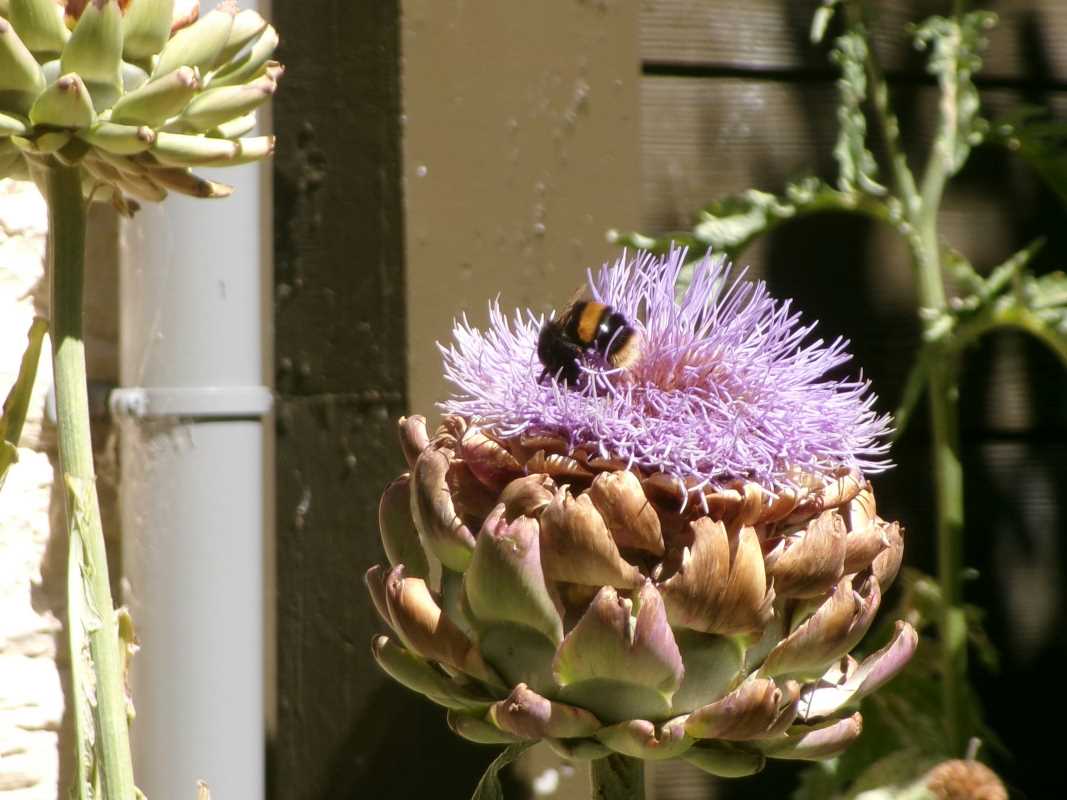 (Image via
(Image via
